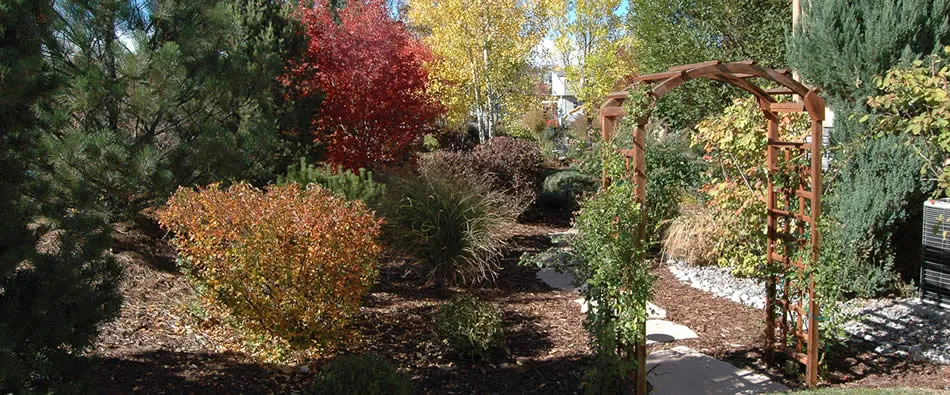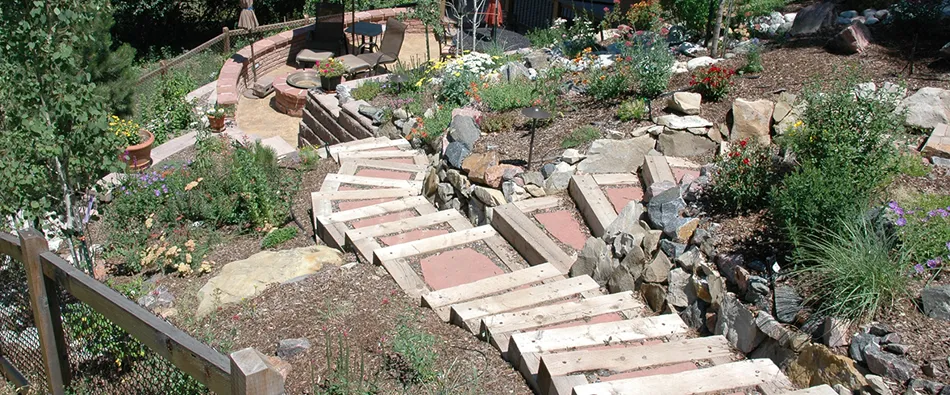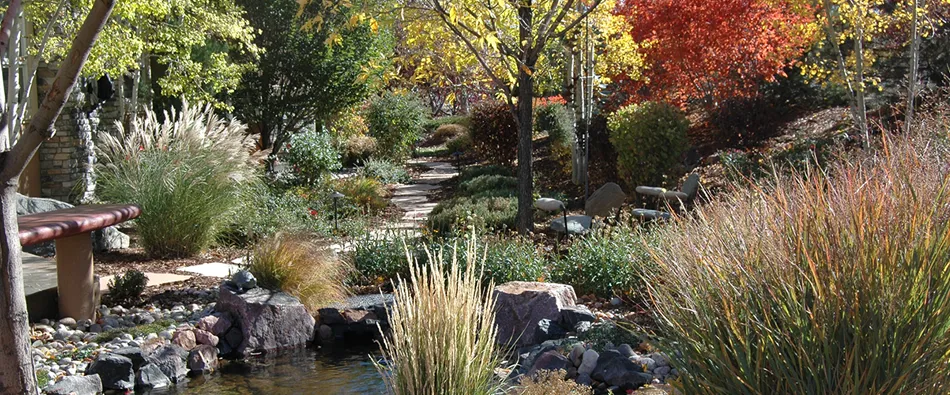Sprinklers should be zoned properly so lawns can be watered separately from trees, shrubs and flowers. Also, water vegetable beds and rose gardens separately from lawn areas.
Design sprinklers to “line out” driveways, walks, roads and non-irrigated areas. Sprinklers should be next to hard surfaces to throw water onto landscape areas. Avoid a design where the sprinkler heads shoot from the center towards pavement to avoid runoff water waste.
Design irrigation zones so water from one head reaches the neighboring head(s). Too much space between sprinkler heads creates dry spots. Sprinklers are best installed in a triangular or square pattern to insure “head to head” coverage. Sprinkler heads that do not overlap cannot be expected to water the intended area properly.
Install only as many heads per irrigation zone as the water pressure will allow. Irrigation heads are designed by manufacturers to apply a certain amount of water over a specific area when performing within a certain operating pressure range. Installing more heads than the water system will handle results in dry spots. Symptoms of low water pressure often appear as donuts of green grass around the sprinkler head with dry areas between heads.
Avoid oscillating sprinklers and sprinkler heads that produce mists or fine sprays. High water pressure should be reduced by adding pressure regulators to the system.
Install the same type of head with the same precipitation rate within each zone. Mixing heads within a zone leads to uneven water application, unsatisfactory plant growth and often runoff water waste.
The water delivery rate of rotary, spray heads and impact sprinkler heads is different. Impact heads deliver as little as 1/2 inch of water per hour, while pop-up spray heads may apply up to two inches of water per hour.
Long, sloping turf areas may require several different sprinkler zones; each line of sprinklers, controlled by a valve, is called a zone.
Irrigation zones should be installed along the top of the slope, rather than up and down the slope. The slope may require two or more lines of sprinklers, each controlled by its own valve. Because water runs downhill, the bottom of the slope tends to receive more water. Adjust sprinkler zones running along the middle and bottom of the slope so they apply progressively less water than the sprinklers at the top of the slope. Watering for the same amount of time in each zone wastes water.
If possible, install water-conserving devices such as check valves, pressure regulators or climate sensors (i.e. rain, temperature and wind sensors). These suspend irrigation under unfavorable weather conditions.
Consider water efficient drip irrigation for shrub borders, flower and vegetable gardens. Drip irrigation exceeds 90 percent efficiency whereas sprinkler systems are 50 to 70 percent efficient.
Annual maintenance of irrigation systems is necessary to keep them operating efficiently.
Replace broken or missing sprinkler heads
Straighten sprinkler heads to vertical that are tilted from winter soil heaving or blows from lawnmowers and foot traffic.
Pop-up heads that don’t reach high enough to achieve a clear spray trajectory should be raised or replaced with taller heads.
Adjust head alignment so that water is not thrown onto streets and driveways.
Check nozzles for plugging and clean filters.
Check that rotor heads are turning properly.
Place catch containers on persistent dry spots to determine if poor sprinkler coverage is the problem. If not sprinklers, soil conditions, slope, aspect or wind should be considered.
Periodic maintenance of irrigation systems is also needed. Plants mature and change. People also change landscapes over time. Add or relocate system components as needed to maintain uniform distribution of water. Ensure that system modifications do not exceed the system watering capacity.
Drip irrigation installed at the base of newly planted trees should be moved as the tree root system expands. Drip irrigation is a point source delivery method that does not distribute water far away from emitters. Drip irrigation that is not relocated over time, wastes water because the fine roots that pick up moisture have grown away from the base. Tree roots grow and spread to reach two to three times the width of the tree canopy. Microspray heads can deliver water over wider areas for small trees but not to wide-ranging root systems of large trees.
If sprinkler systems are over ten years old, they often require part replacements and component upgrades.






